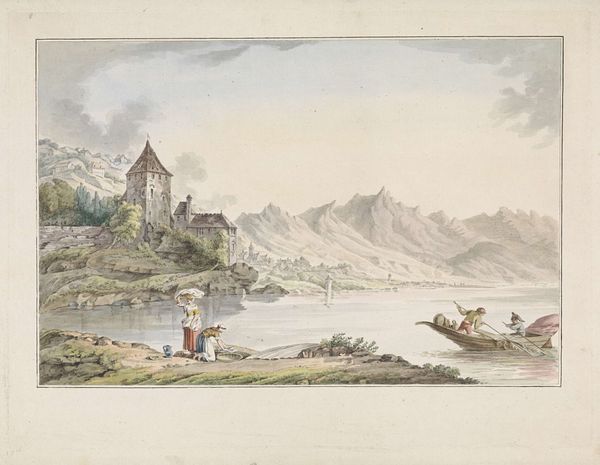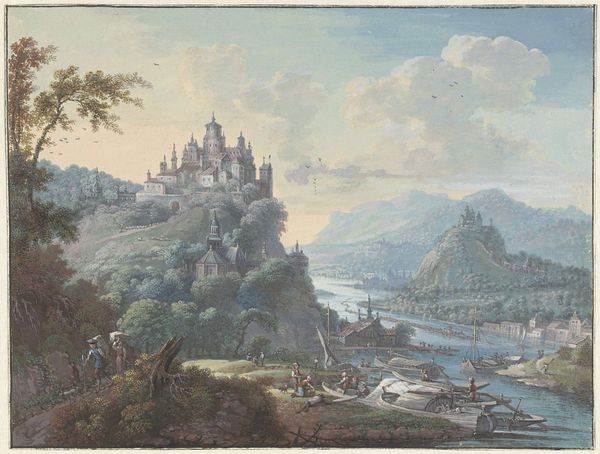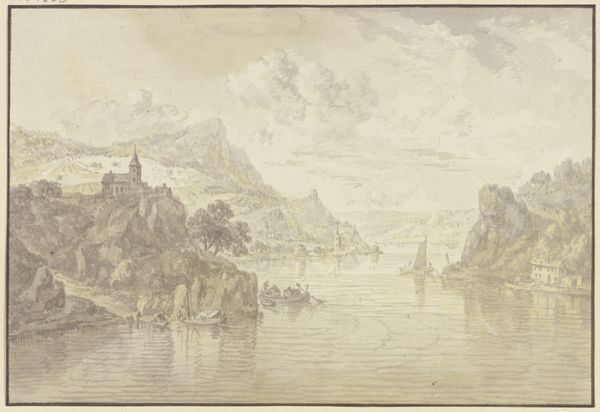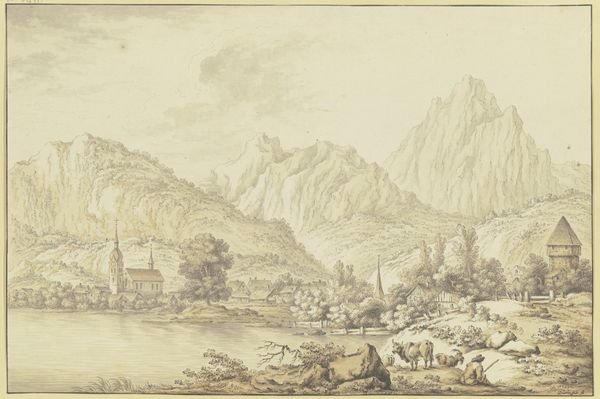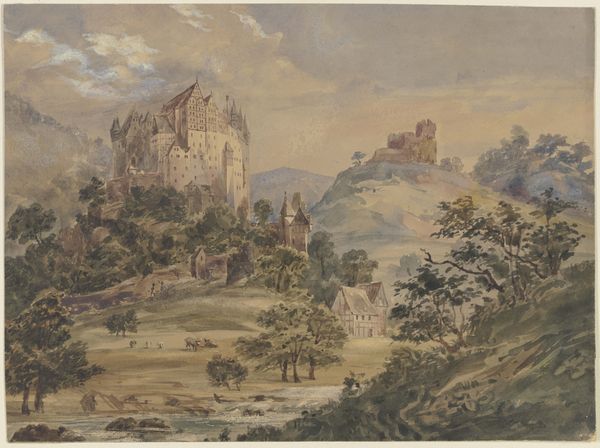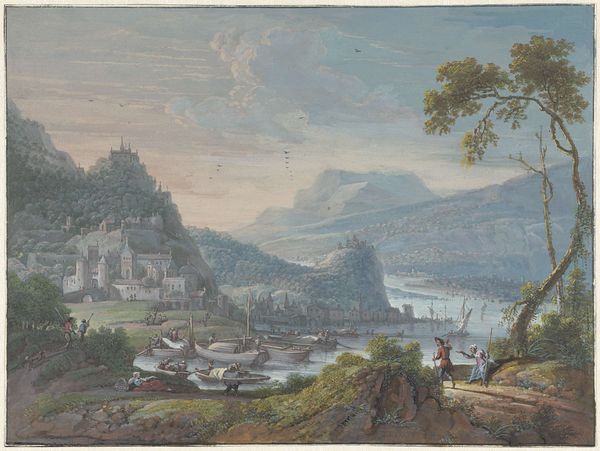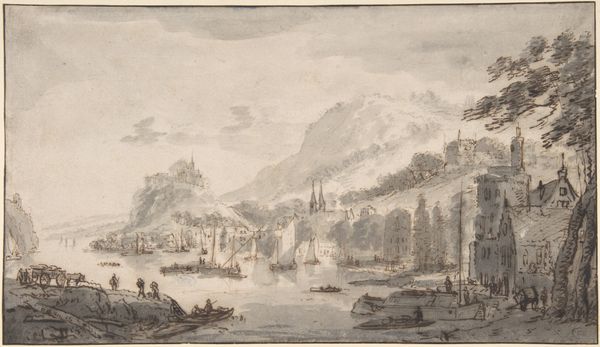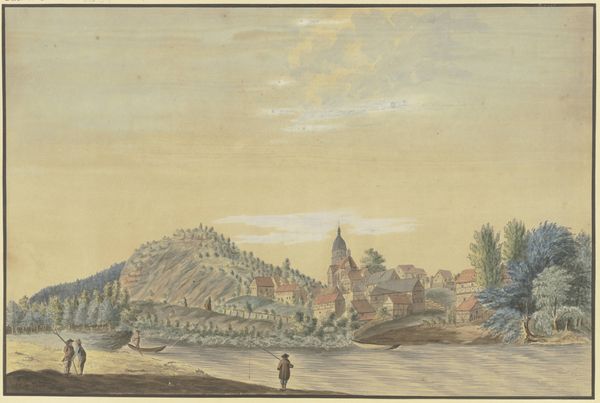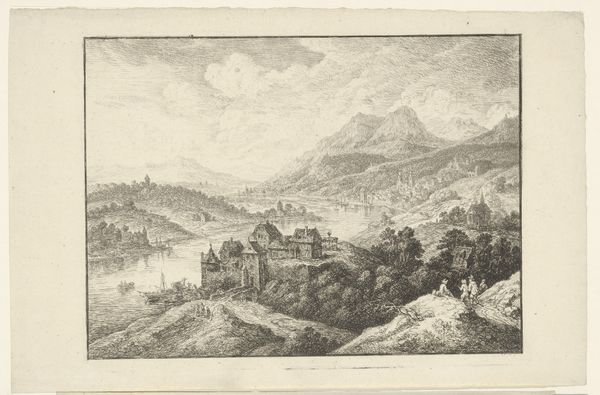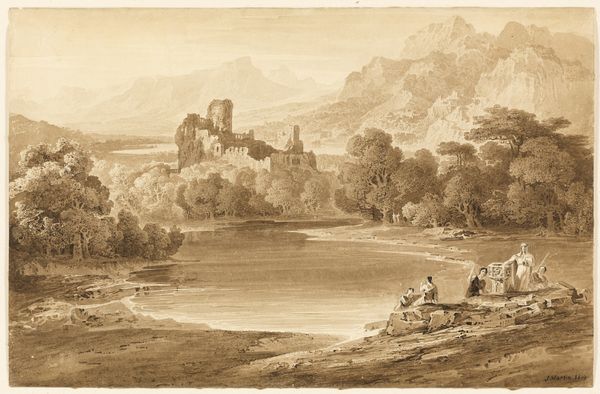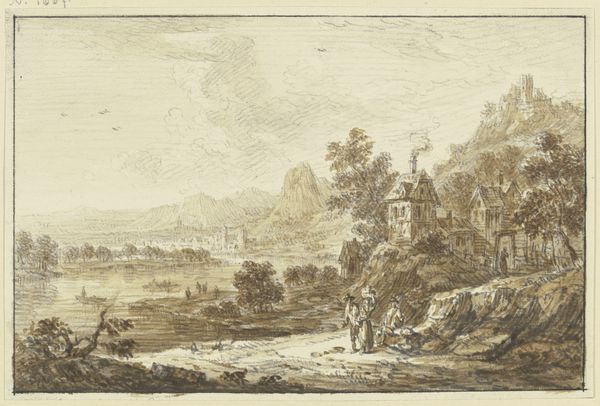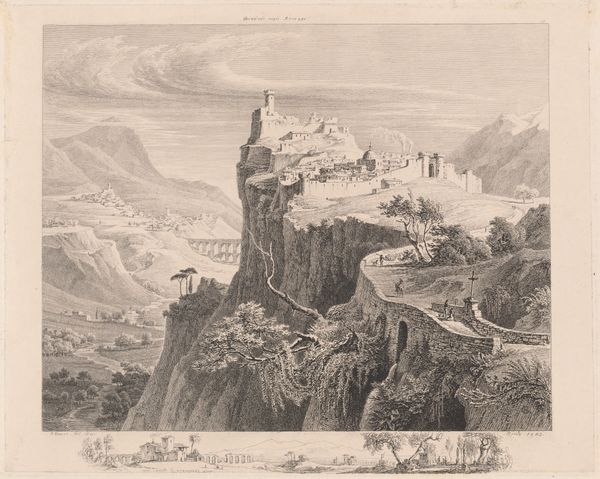
drawing, tempera, painting, paper, watercolor, ink, indian-ink
#
drawing
#
tempera
#
painting
#
landscape
#
etching
#
paper
#
11_renaissance
#
watercolor
#
ink
#
indian-ink
#
cityscape
#
history-painting
#
watercolor
Copyright: Public Domain
Curator: Before us we have “Fluss zwischen Bergen, rechts auf einem Felsen ein Kloster,” or “River between Mountains, Monastery on a Rock to the Right," found here at the Städel Museum. This work is attributed to Cornelis Verdonck, though its precise date remains unknown, and it employs watercolor, ink, and tempera on paper. Editor: It has an air of the sublime about it, doesn’t it? A quaint cityscape nestled within an awe-inspiring landscape. There's a sense of romanticism evoked, not just through the towering mountains, but in the delicate details too. Curator: I agree. Landscape art of this era—especially rendered in delicate washes—often engaged with notions of power: nature’s power relative to human endeavours. The placement of the monastery becomes particularly interesting, asserting religious and institutional influence over the land itself. Editor: Absolutely. The way the town is framed—or almost entrapped—between these geological giants seems a pointed commentary on our relationship with the environment. Are we dominating it, or are we merely tiny players on a vast, ancient stage? It seems as if it also subtly explores concepts of class; consider who has the access to and the privilege of experiencing such beauty. Curator: It’s easy to interpret such artworks from our contemporary vantage, considering how the cultural consumption of the picturesque landscapes could indeed signify a particular kind of social standing. The act of creating and displaying such images could perpetuate unequal access to the 'natural' world, an access tinged with class and status. It calls into question what social role the imagery actually has for the 21st-century museum-goer. Editor: Exactly. The materials themselves speak to an intersectionality. It would be interesting to learn more about the origin and social circulation of each material. Was the availability of tempera different based on gender or race? Those seemingly mundane considerations impact any final artwork and how its role develops over time. Curator: I am intrigued by your emphasis on the intersectional impact, of everyday items, when we investigate cultural heritage. The act of focusing our lens on items, allows us to look more acutely at the political message within artwork—or how we wish to consume such message, anyway. Editor: Precisely, understanding the various contexts allows the viewers to participate and think critically about any object of veneration, like the ones at the museum. Curator: Well, reflecting upon it now, considering the power structures both represented and perhaps inadvertently perpetuated within it, adds an interesting layer to understanding "Fluss zwischen Bergen”. Editor: It certainly transforms it from a simple pretty picture into a visual conversation about control and perception.
Comments
No comments
Be the first to comment and join the conversation on the ultimate creative platform.
